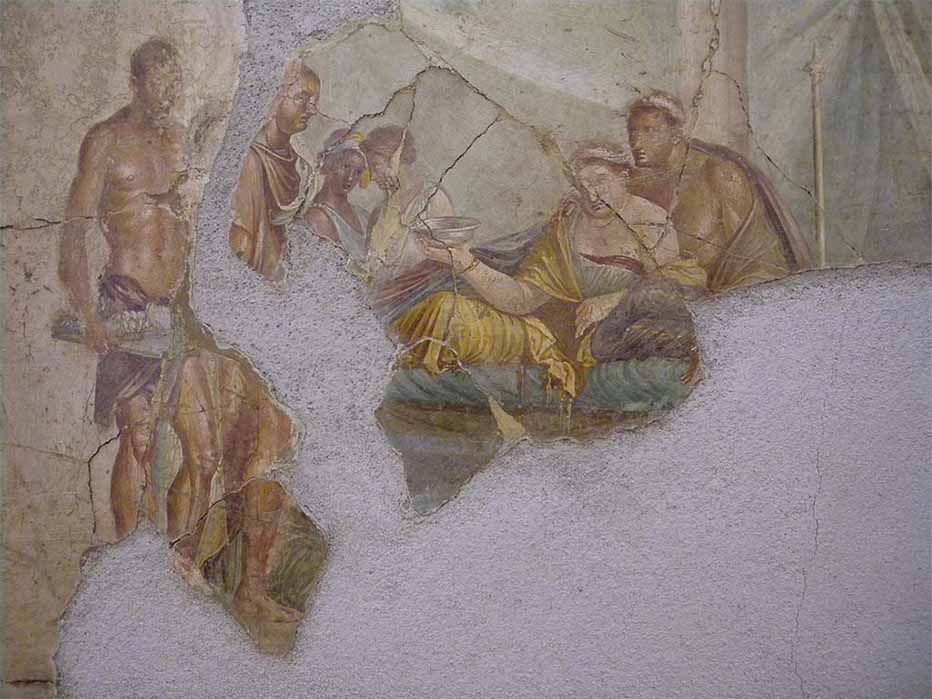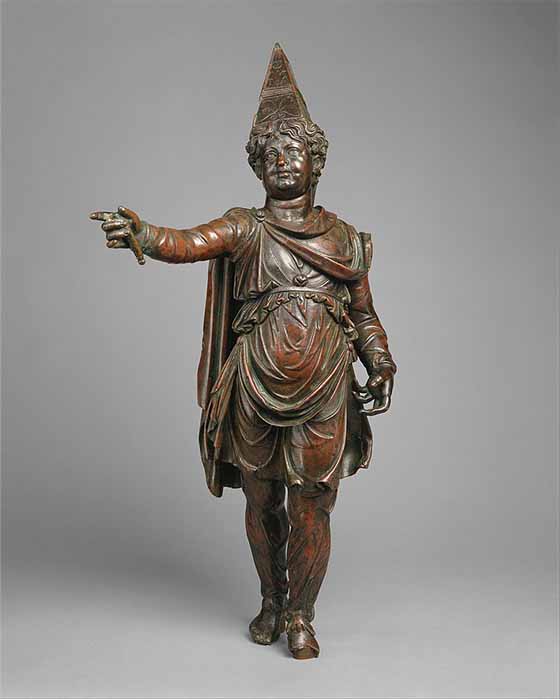
Cleopatra Selene, Serene Queen of Mauritania
The only child of Cleopatra and Marc Antony’s to reach adulthood, Queen Cleopatra Selene (40 BC- 5 BC) of Mauretania was one of the most important women of the Augustan age— exceptional in and of itself considering the animosity in Rome against her parents. According to archaeological and literary evidence, Cleopatra Selene had a reputation for being a powerful and formidable monarch—her mother’s daughter through and through. At a mere 15 years of age, she married King Juba II of Mauretania and they successfully ruled together for 20 years. The royal couple put the once-impoverished province on the map by turning Mauretania into a destination point throughout the Roman Empire. On account of their resourcefulness Mauretania became a major exporter and home to one of the largest urban capitals (Caesarea) in the western part of the Roman Empire.
Cleopatra Selene’s early life, however, was not always promising. After her vilified parents were caught in the crosshairs of the Roman fleet, she and her two brothers—her twin, Alexander Helios and younger brother Ptolemy Philadelphus—were unceremoniously dispatched to Rome so that they could play the starring role in Octavian’s three-day-long triumph (29 BC) celebrating his victory over their mother.
On the final day of festivities, as the glittering procession parading Egypt’s opulent spoils wound its way through Rome’s rough and tumble streets, the Romans—always up for a party— were lined up in threes and fours to catch a glimpse of the swaggering splendor. Coming up at the rear was the main exhibit that the crowds were craning their necks to see. Since Cleopatra’s suicide denied Rome the satisfaction of seeing her in shackles, the Romans had to settle for her likeness instead. Crudely outfitted with her signature asp in tow, the Queen the Romans loved to hate was decked out in full effigy with her ten-year old twins tethered in chains of gold and flanked on either side of her. So that there was no question of whose children they were, the twins were dressed as the sun, Alexander (Helios) and the moon, Cleopatra (Selene).

Cleopatra VII of Ptolemaic Egypt, wearing her royal diadem, consuming poison in an act of suicide, while her son Caesarion, also wearing a royal diadem, stands behind her (first century AD) House of Giuseppe II, Pompeii (Public Domain)
Upon sight of the two innocents, a hush fell upon the jeering crowd. Even in their festive state, Romans were not without a heart. The children’s state of mind was another story. Less than a year before, hard on the heels of their parents’ dramatic ends, their 17-year-old half-brothers Caesarion, son of Cleopatra and Julius Caesar, and Marcus Antonius Antyllus, the eldest son and heir of Marc Antony, were summarily executed by Octavian's henchmen. As his prisoners of war paraded in his triple triumph, they must have wondered what Octavian had in store for them. They had, after all, good cause to be pessimistic about their futures.
Donations of Alexandria
Still their fall from grace is hard to imagine. Just some four years prior, they were the headliners of a different kind of spectacle when their parents summoned all of Alexandria to the 600-foot-long marble colonnaded gymnasium— the largest structure in Alexandria— for a lavish extravaganza known as the Donations of Alexandria. In the grand finale, Antony and Cleopatra were seated on colossal thrones of gold dressed for all the world to see as their counterparts Dionysus/Osiris and Aphrodite/Isis. Costumed as their son Horus was the eldest of Cleopatra’s progeny: the 13-year-old, Ptolemy XV Caesar called Caesarion. Also elaborately dressed, the twins at six years of age and Ptolemy Philadelphus at two years make their first public appearance.

Bronze statuette of a boy in Oriental dress identified as a possible depiction of Alexander Helios (mid-1st century BC) Metropolitan Museum of Art (CC0)
During the ceremony, Antony formally recognized Cleopatra as Queen of Egypt, Cyprus, Libya and central Syria but the main event of the night—and one that might have sealed his fate— was the proclamation of Caesarion as the son of the deified Julius Caesar thus the son of a god. He was hailed as the king of kings and heir apparent to his mother’s vast domain. Additionally, a diminutive Cleopatra Selene became Queen of Crete and Cyrenaica (eastern Libya) and Alexander Helios became King of Armenia, Media, and Parthia. While the toddler Ptolemy Philadelphus was awarded the kingship of Syria, Phoenicia, and Cilicia.




